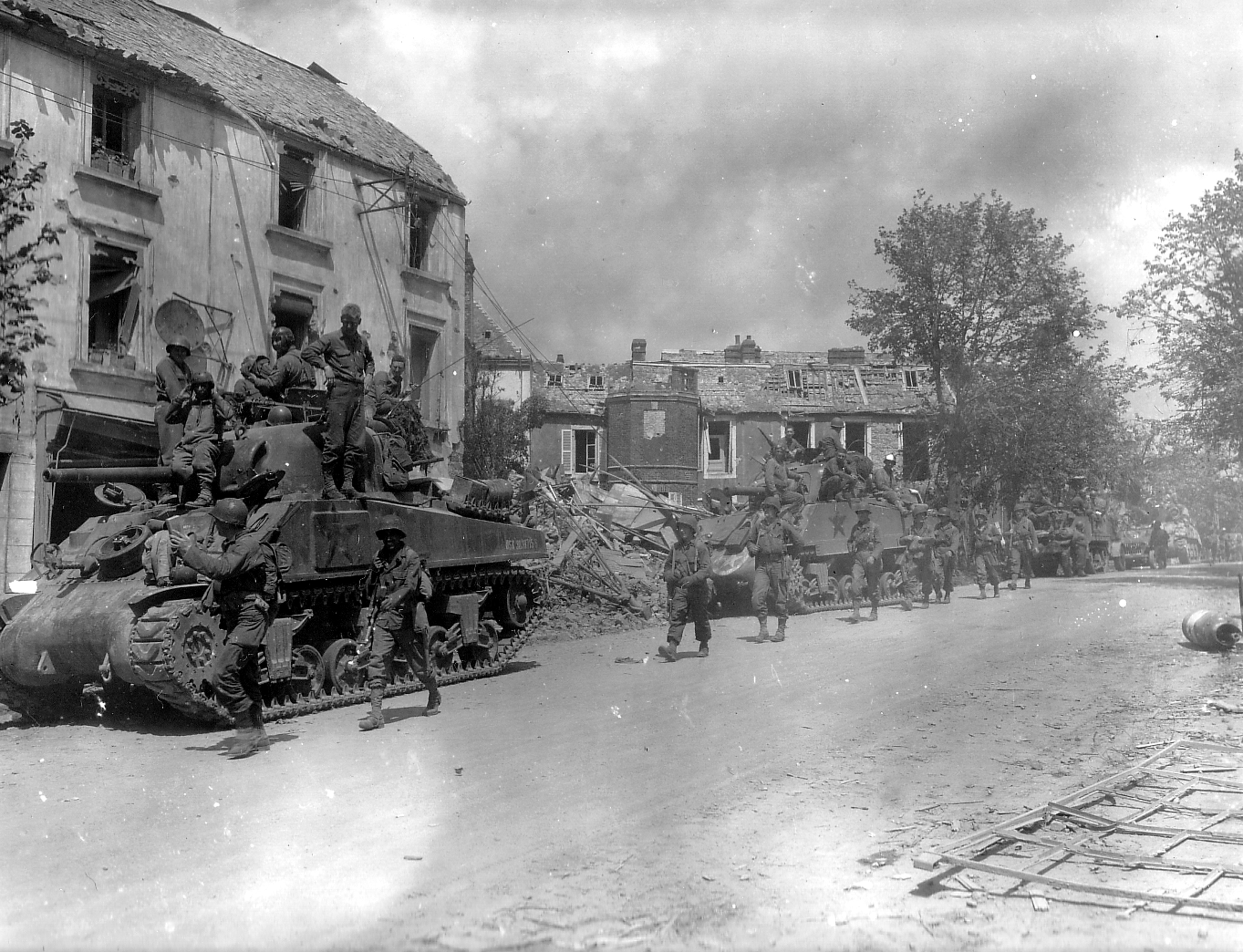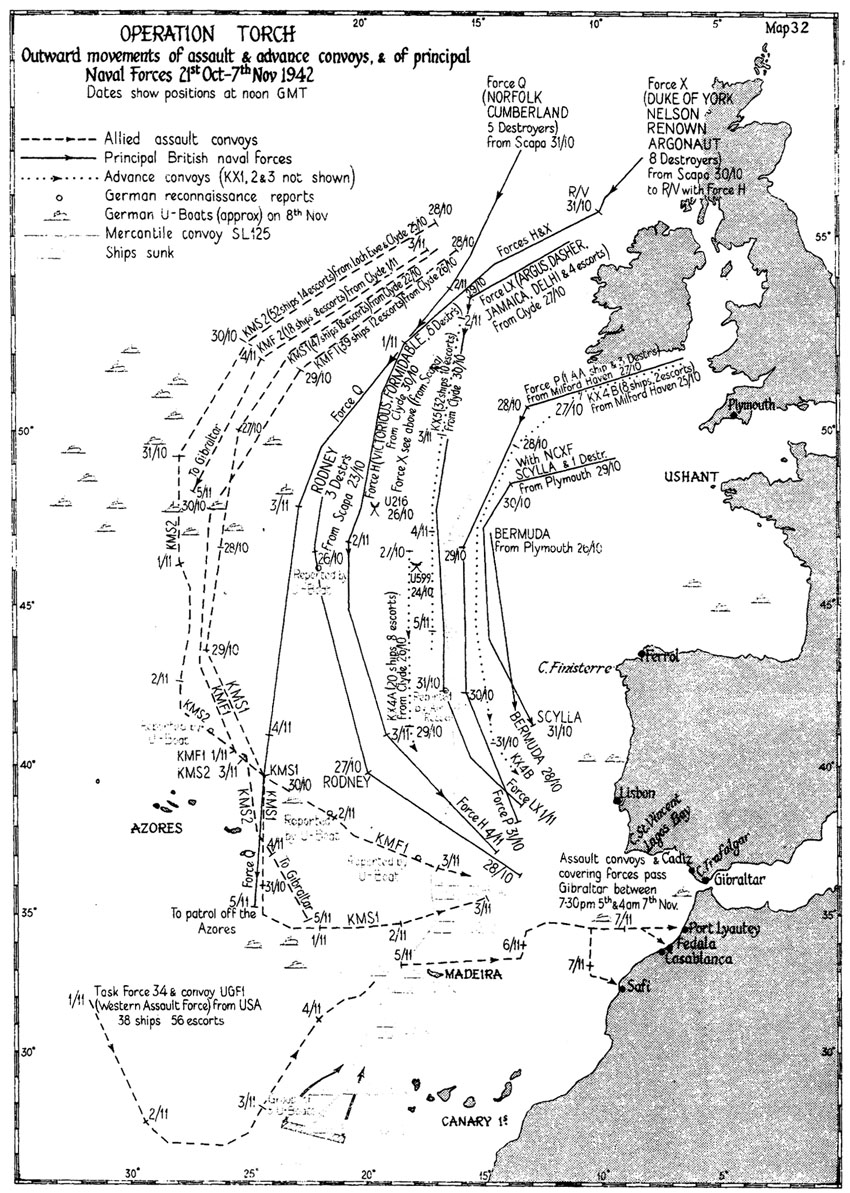|
French State
Vichy France (; 10 July 1940 – 9 August 1944), officially the French State ('), was a French rump state headed by Marshal Philippe Pétain during World War II, established as a result of the French capitulation after the defeat against Germany. It was named after its seat of government, the city of Vichy. Officially independent, but with half of its territory occupied under the harsh terms of the 1940 armistice with Nazi Germany, it adopted a policy of collaboration. Though Paris was nominally its capital, the government established itself in Vichy in the unoccupied "free zone" (). The occupation of France by Germany at first affected only the northern and western portions of the country. In November 1942, the Allies occupied French North Africa, and in response the Germans and Italians occupied the entirety of Metropolitan France, ending any pretence of independence by the Vichy government. On 10 May 1940, France was invaded by Nazi Germany. Paul Reynaud resign ... [...More Info...] [...Related Items...] OR: [Wikipedia] [Google] [Baidu] |
Nazi Germany
Nazi Germany, officially known as the German Reich and later the Greater German Reich, was the German Reich, German state between 1933 and 1945, when Adolf Hitler and the Nazi Party controlled the country, transforming it into a Totalitarianism, totalitarian dictatorship. The Third Reich, meaning "Third Realm" or "Third Empire", referred to the Nazi claim that Nazi Germany was the successor to the earlier Holy Roman Empire (800–1806) and German Empire (1871–1918). The Third Reich, which the Nazis referred to as the Thousand-Year Reich, ended in May 1945, after 12 years, when the Allies of World War II, Allies defeated Germany and entered the capital, Berlin, End of World War II in Europe, ending World War II in Europe. After Hitler was appointed Chancellor of Germany in 1933, the Nazi Party began to eliminate political opposition and consolidate power. A 1934 German referendum confirmed Hitler as sole ''Führer'' (leader). Power was centralised in Hitler's person, an ... [...More Info...] [...Related Items...] OR: [Wikipedia] [Google] [Baidu] |
Pierre-Étienne Flandin
Pierre-Étienne Flandin (; 12 April 1889 – 13 June 1958) was a French conservative politician of the Third Republic, leader of the Democratic Republican Alliance (ARD), and Prime Minister of France from 1934 to 1935. A military pilot during World War I, Flandin held a number of cabinet posts during the interwar period. He was Minister of Commerce, under the premiership of Frédéric François-Marsal, for just five days in 1924. He was Minister of Commerce and Industry in the premierships of André Tardieu in 1931 and 1932. Between those posts, he served under Pierre Laval as Finance Minister. In 1934 (6 February to 8 November), he was Minister of Public Works in the second cabinet of Gaston Doumergue. He became Prime Minister in November 1934, but his premiership lasted only until June 1935. However, a number of important pacts were negotiated during his term: the Franco-Italian Agreement of 1935, the Stresa Front and the Franco-Soviet Pact. Flandin was, at 45, the younges ... [...More Info...] [...Related Items...] OR: [Wikipedia] [Google] [Baidu] |
Rump State
A rump state is the remnant of a once much larger state that was reduced in the wake of secession, annexation, occupation, decolonization, a successful coup d'état or revolution on part of its former territory. In the last case, a government stops short of going into exile because it controls parts of its remaining territories. Examples Ancient history *During the Second Intermediate Period, following the conquest of Lower Egypt by the Hyksos, there was a rump Egyptian kingdom in Upper Egypt centered on Thebes, which eventually reunified the country at the start of the New Kingdom. * The Seleucid Empire became a rump state in Northern Syria after losing most of its territory to the Parthian Empire. * After the collapse of the Western Roman Empire in Gaul, the Kingdom of Soissons survived as a rump state under Aegidius and Syagrius, until it was conquered by the Franks under Clovis I in 486. Post-classical history * Guge and Maryul was a rump state of the Tibetan Empire. ... [...More Info...] [...Related Items...] OR: [Wikipedia] [Google] [Baidu] |
De Jure
In law and government, ''de jure'' (; ; ) describes practices that are officially recognized by laws or other formal norms, regardless of whether the practice exists in reality. The phrase is often used in contrast with '' de facto'' ('from fact'), which describes situations that exist in reality, even if not formally recognized. Definition ''De jure'' is a Latin expression composed of the words ''de'',("from, of") and ''jure'',("law", adjectival form of '' jus''). Thus, it is descriptive of a structural argument or position derived "from law". Usage Jurisprudence and ''de jure'' law In U.S. law, particularly after '' Brown v. Board of Education'' (1954), the difference between ''de facto'' segregation (that existed because of voluntary associations and neighborhoods) and ''de jure'' segregation (that existed because of local laws) became important distinctions for court-mandated remedial purposes. Government and culture Between 1805 and 1914, the ruling dynasty of Egypt ... [...More Info...] [...Related Items...] OR: [Wikipedia] [Google] [Baidu] |
French Franc
The franc (; , ; currency sign, sign: F or Fr), also commonly distinguished as the (FF), was a currency of France. Between 1360 and 1641, it was the name of coins worth 1 livre tournois and it remained in common parlance as a term for this amount of money. It was reintroduced (in French livre, decimal form) in 1795. After two centuries of inflation, it was Redenomination, redenominated in 1960, with each (NF) being worth 100 old francs. The NF designation was continued for a few years before the currency returned to being simply the franc. Many French residents, though, continued to quote prices of especially expensive items in terms of the old franc (equivalent to the new centime), up to and even after the introduction of the euro (for coins and banknotes) in 2002. The French franc was a commonly held international reserve currency of reference in the 19th and 20th centuries. Between 1998 and 2002, the conversion of francs to euros was carried out at a rate of 6.55957 franc ... [...More Info...] [...Related Items...] OR: [Wikipedia] [Google] [Baidu] |
Sigmaringen Enclave
The Sigmaringen enclave was a temporary government-in-exile formed by remnants of France's Nazi-collaborating Vichy regime during the final stages of World War II. Established in the requisitioned Sigmaringen Castle in southwestern Germany, it was created after the German military evacuated key Vichy officials, including Marshal Philippe Pétain and other collaborators, to avoid capture by advancing Allied forces. Though coerced into relocation, Pétain and ex-Prime Minister Pierre Laval refused to cooperate, leaving leadership to figures like Fernand de Brinon and Marcel Déat, who sought to maintain a semblance of legitimacy. Designated as an extraterritorial French enclave by Nazi Germany, the commission hosted Axis embassies and operated propaganda outlets but struggled with internal dysfunction and harsh living conditions for its 6,000 residents, including soldiers, forced laborers, and prominent collaborationist writers like Louis-Ferdinand Céline. The enclav ... [...More Info...] [...Related Items...] OR: [Wikipedia] [Google] [Baidu] |
Allied Advance From Paris To The Rhine
The Siegfried Line campaign was a phase in the Western Front (World War II)#1944–1945: The Second Front, Western European campaign of World War II, which involved engagments near the German defensive Siegfried Line. This campaign spanned from the end of Operation Overlord and the push across northern France, which ended on 15 September 1944, and concluded with the opening of the German Ardennes counteroffensive, better known as the Battle of the Bulge. Background German forces had been routed during the Allies of World War II, Allied Operation Cobra, break-out from Normandy. The Allies advanced rapidly against an enemy that put up little resistance. But after the liberation of Paris in late August 1944, the Allies paused to re-group and organise before continuing their advance from Paris to the Rhine, River Rhine. The pause allowed the Germans to solidify their lines—something they had been unable to do west of Paris. By the middle of September 1944, the three Western Al ... [...More Info...] [...Related Items...] OR: [Wikipedia] [Google] [Baidu] |
Case Anton
Case Anton () was the military occupation of Vichy France carried out by Germany and Italy in November 1942. It marked the end of the Vichy regime as a nominally independent state and the disbanding of its army (the severely-limited '' Armistice Army''), but it continued its existence as a puppet government in Occupied France. One of the last actions of the Vichy armed forces before their dissolution was the scuttling of the French fleet in Toulon to prevent it from falling into Axis hands. Background A German plan to occupy Vichy France had been drawn up in December 1940 under the codename of Operation Attila and soon came to be considered with Operation Camellia, the plan to occupy Corsica. Operation Anton updated the original Operation Attila, including different German units and adding Italian involvement. For Adolf Hitler, the main rationale for permitting a nominally independent France to exist was that it was, in the absence of German naval superiority, the only ... [...More Info...] [...Related Items...] OR: [Wikipedia] [Google] [Baidu] |
Operation Torch
Operation Torch (8–16 November 1942) was an Allies of World War II, Allied invasion of French North Africa during the Second World War. Torch was a compromise operation that met the British objective of securing victory in North Africa while allowing American armed forces the opportunity to begin their fight against Nazi Germany and Fascist Italy on a limited scale. The French colonies were aligned with Germany via Vichy France but the loyalties of the population were mixed. Reports indicated that they might support the Allies. The American General Dwight D. Eisenhower, supreme commander of the Allied forces in Mediterranean and Middle East theatre of World War II, Mediterranean theater of the war, approved plans for a three-pronged attack on Casablanca (Western), Oran (Centre) and Algiers (Eastern), then a rapid move on Tunis to catch Axis forces in North Africa from the west in conjunction with the British advance from Egypt. The Western Task Force encountered unexpected ... [...More Info...] [...Related Items...] OR: [Wikipedia] [Google] [Baidu] |
Ordinance Of 9 August 1944
The Ordinance of 9 August 1944 was a constitutional law enacted by the Provisional Government of the French Republic (GPRF) during the Liberation of France which re-established republican rule of law in mainland France after four years of occupation by Nazi Germany and control by the collaborationist Vichy regime. Background The refusal to consider the Vichy regime as a legally constituted authority was a constant in the Free France founded by Charles . Already in his Brazzaville Manifesto of 27 October 1940, the general had proclaimed that there was no longer a French government, and that "the Vichy-based organization that claims to bear this name is unconstitutional and submits to the invader", even as he published on the same day the first Ordinance of Free France establishing the Empire Defense Council, which organized "the legal authority in all parts of the [colonial] Empire liberated from control of the enemy ... based on French legislation prior to 23 June 1940." ... [...More Info...] [...Related Items...] OR: [Wikipedia] [Google] [Baidu] |
French Constitutional Law Of 1940
The French Constitutional Law of 1940 is a set of bills that were voted into law on 10 July 1940 by the National Assembly, which comprised both the Senate and the Chamber of Deputies during the French Third Republic. The law established the Vichy regime and passed with 569 votes to 80, with 20 abstentions. The group of 80 parliamentarians who voted against it are known as the Vichy 80. The law gave all the government powers to Philippe Pétain, and further authorized him to take all necessary measures to write a new constitution. Text of the French Constitutional Law of 1940 Pétain interpreted this as de facto suspending the French Constitutional Laws of 1875 which established the Third Republic, even though the law did not explicitly suspend it, but only granted him the power to write a new constitution. The next day, by Act No 2, Pétain defined his powers and abrogated all the laws of the Third Republic that were incompatible with them. Although given full constituent powers ... [...More Info...] [...Related Items...] OR: [Wikipedia] [Google] [Baidu] |
Second Compiègne
The Armistice of 22 June 1940, sometimes referred to as the Second Armistice at Compiègne, was an agreement signed at 18:36 on 22 June 1940 near Compiègne, France by officials of Nazi Germany and the French Third Republic. It became effective at midnight on 25 June. Signatories for Germany included Wilhelm Keitel, a senior military officer of the Wehrmacht (the German armed forces), while those on the French side held lower ranks, including general Charles Huntziger. Following the decisive German victory in the Battle of France, the armistice established a German occupation zone in Northern and Western France that encompassed about three-fifths of France's European territory, including all English Channel and Atlantic Ocean ports. The remainder of the country was to be left unoccupied, although the new regime that replaced the Third Republic was mutually recognised as the legitimate government of all of Metropolitan France except Alsace–Lorraine. The French were also pe ... [...More Info...] [...Related Items...] OR: [Wikipedia] [Google] [Baidu] |






